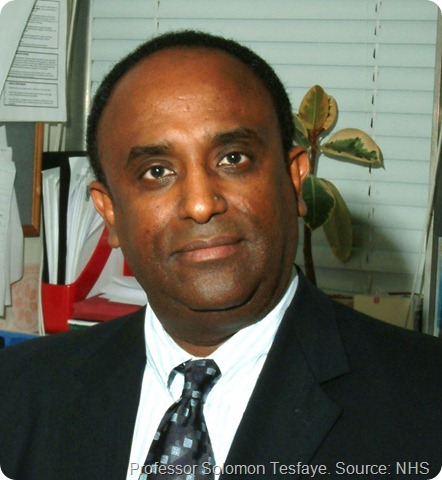Researchers in Sheffield have been awarded over £310,000 to carry out a study that could help revolutionise the way clinicians treat the pain experienced by thousands of people with diabetes.
The research represents the first major study to investigate how the brain processes the pain often caused by diabetes, potentially paving the way for new therapies in the future.
The team of researchers from Sheffield Teaching Hospitals and the University of Sheffield, led by Professor Solomon Tesfaye, Consultant Physician and Honorary Professor of Diabetic Medicine, has been awarded the grant by the European Foundation for the Study of Diabetes (EFSD) and healthcare provider Novo Nordisk.

Diabetes now affects over three million people in the UK, with more than 600,000 of these suffering from painful diabetic peripheral neuropathy – nerve damage of diabetes causing pain, particularly in the feet. However, drug treatment has been elusive due to the fact that it is still not known exactly what causes the pain.
Previous research in Sheffield has shown that an area of the brain, called the thalamus, plays a crucial role in the condition, becoming engorged with blood in those that have painful neuropathy. However, it is unclear why patients with the condition experience the pain and what the role of the thalamus is.
The aim of the study is therefore to establish whether the abnormal pattern of blood flow in the thalamus is causing the pain, or whether it is actually a response to the pain itself.
Professor Solomon Tesfaye said: “Painful diabetic neuropathy is a debilitating condition, often severely limiting a person’s quality of life. Around 50% of people with the condition suffer from anxiety or depression, and it is commonly associated with loss of sleep and unemployment. It’s therefore vital that we do everything we can to try to find the precise cause of the pain and to try to develop therapies against it.
“A small pilot study we carried out found that the thalamus part of the brain looked different in patients with the condition, and so we have honed in on this as a crucial focus of study. We still don’t know whether this difference causes the pain or is caused by it, and so this study will allow us to discover this.
“The study could potentially lead to us developing new treatments that specifically target this area of the brain, which of course would be an exciting development for patients and clinicians alike.”
The study, to be carried out at the Royal Hallamshire Hospital, will compare five different groups of patients – type 1 diabetic subjects with no evidence of neuropathy; type 1 diabetic subjects with painless neuropathy; type 1 diabetic subjects with evidence of painful neurropathy; patients with painful neuropathy caused by chemotherapy; and healthy volunteers. 20 patients from each group will participate.
Study participants will be given a series of tests, including nerve stimulation, during which brain activity will be measured.
The study team consists of Professor Tesfaye, Iain Wilkinson, Professor of Magnetic Resonance Physics; Paul Griffiths, Professor of Radiology; Dr Dinesh Selvarajah, Honorary Consultant Diabetologist; Dr Rajiv Gandhi, Consultant Diabetologist and the team will also collaborate with Professor Irene Tracey of the University of Oxford and Professor Rayaz Malik of the University of Manchester.
The study will last for a period of three years.